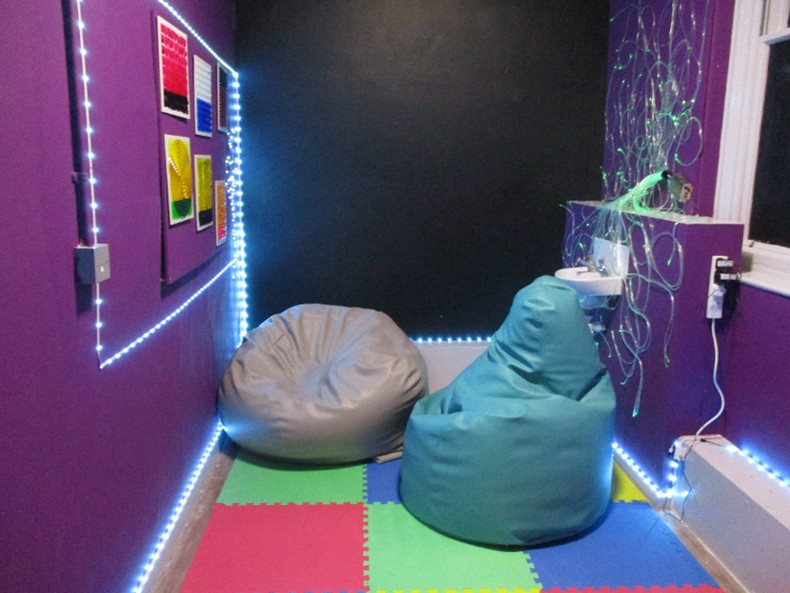Four years on: Neurodiversity in prisons
In July 2021, we published a review of evidence of ‘Neurodiversity in the Criminal Justice System’, as part of the Criminal Justice Joint Inspection (CJJI) with HM Inspectorate of Probation and HM Inspectorate of Constabulary and Fire & Rescue Services. The findings painted a stark picture – neurodivergent people in prison were often unidentified, unsupported, and disadvantaged by a system that lacked adequate understanding of their needs or made consistent provision. Four years on, we ask: how far have prisons come in supporting those with neurodivergent needs?
A recap of the review
In relation to prisons, the original report revealed:
- a lack of consistent screening on reception into prison
- challenges in knowing the prevalence of prisoners with neurodivergent needs
- a lack of staff training to recognise and support neurodivergent individuals
- a lack of reasonable adjustments to enable neurodiversity-friendly prison environments
- no overarching strategy for this area at the national level or across the criminal justice system.
However, we reported that there were simple and low-cost steps that prisons could be taking to become more neurodiversity-friendly, from adapting environments and communication styles to fostering a more inclusive staff culture. We proposed that these changes could not only support neurodivergent individuals, but improve outcomes for everyone who comes into contact with the criminal justice system.
What has changed since 2021?
Neurodiversity Support Managers (NSMs) rolled out nationally
One of the most notable changes has been the introduction of NSMs across prisons. As of May 2024, we understand that these dedicated roles are now in place at 105 publicly owned prisons and young offender institutions.[1] Their responsibilities include:
- raising awareness of neurodiversity in prison and strengthening approaches for identifying those with neurodivergent needs
- supporting staff with tailored strategies and reasonable adjustments
- acting as a link between prisons, education providers, and health care.
Neurodiversity support managers are an encouraging addition but are not in and of themselves the solution. Their success depends on what they deliver on the ground to improve outcomes. Inspectors have seen some promising individual examples. At a recent inspection of Warren Hill, we identified the work of the NSM as notable positive practice. Here, the NSM was well integrated into the prison and provided high-quality support to prisoners through support plans, sensory rooms and one-to-one sessions. When we visited Buckley Hall, the NSM used in-depth screening to identify prisoners with learning difficulties and had provided neurodiverse awareness training to around two-thirds of staff.
Improved staff awareness and training
Staff training packages focused on neurodiversity are now more widely available, with some prisons embedding neurodiversity into induction and ongoing staff development. However, uptake and depth of understanding still vary across the estate.
At Parc, disappointingly we found that many staff on the neurodiverse unit had not been trained to work with neurodivergent prisoners. At Forest Bank, staff on the wings often lacked knowledge about the needs of neurodivergent prisoners, including the personalised support plans which were designed to help them engage with these men.
In contrast, it was encouraging to see some NSMs collaborate with prisoners to deliver neurodiversity support. At Kirkham, staff and 12 prisoner orderlies received neurodiversity awareness training. At Warren Hill, orderlies and nine staff ‘neurodiversity champions’ had been trained to level 2 standard in neurodiversity awareness. At this prison, prisoner orderlies checked in with those receiving support on a six-weekly basis and used this information to tailor their support and assess the effectiveness of different departments within the prison in working with men with neurodiverse needs. At Drake Hall, a neurodiversity passport helped staff understand the individual needs of women so they could offer more useful support.
Better identification, but data gaps remain
In 2021, we called for a common screening tool for universal use within the criminal justice system. We had learned that many prisons had multiple screening processes that were carried out by different practitioners, and which were rarely joined up. Today, the system still lacks consistent data collection on how many people in prison are neurodivergent and how this affects their experience of prison life. Many prisons continue to rely on self-disclosure, and many prisoners with neurodivergent needs still go unidentified. For example, at Thameside, there was no assessment pathway for prisoners with attention-deficit hyperactivity disorder (ADHD).
We see more positive outcomes for prisoners with neurodivergent needs where there is effective collaboration between health care providers and NSMs. We saw this at Styal where staff quickly identified women who were neurodivergent and devised individual support plans for them. These support plans were then shared with teachers, trainers, and instructors.
Some reasonable adjustments introduced
Several prisons have implemented practical changes: quiet spaces, sensory items, visual aids and modified regimes. However, systemic embedding of adjustments remains a work in progress.


Sensory rooms at Warren Hill (left) and Styal
At Ranby, we saw a positive workshop initiative designed for prisoners with neurodivergent needs. Prisoners worked together to agree aspects of the environment, including the volume of the radio while they worked. Prisoners told us they valued the space to both work and develop their employability skills.
At Foston Hall, the NSM provided women with neurodivergent needs with support aids including weighted blankets, noise-cancelling ear plugs, sleep masks and fidget aids. At Forest Bank, there were quieter gym sessions available for prisoners who were neurodivergent.
At Standford Hill, leaders had introduced a neurodiversity forum to hear from prisoners how best to support them during their time in prison. This helped prisoners to access learning and work opportunities. Here, neurodiversity leads were held in high regard by prisoners.
We have also seen examples where momentum to support those with neurodivergent needs ends at identification. At Deerbolt, the prison had identified that around two-thirds of prisoners had neurodivergent needs, but there was little work to support them.
Areas in need of attention
- Variability across the estate: though some prisons have embraced the NSM model and training with enthusiasm, provision for neurodivergent people continues to vary too much from prison to prison.
- Over-reliance on individuals: where support is strong, it is often owing to specific staff or prisoner champions, rather than a systemic change. Without this, long-term, sustained improvement in outcomes will be difficult to achieve.
- Limited inclusion of lived experience: neurodivergent people in prison remain largely absent from service design and review.
Looking ahead
Four years on from the CJJI review, there are reasons to be optimistic, but this is not a chapter we can or should close. There is more work to be done.
As we inspect, we will continue to ask questions such as:
- Are neurodivergent prisoners being identified early enough?
- How are they being supported by staff to achieve positive outcomes?
- What adjustments are being made to meet their needs?
We will continue to identify positive practice in this area and will keep a close eye on further developments in this space.
[1] Greater support for neurodivergent offenders in bid to cut crime – GOV.UK
